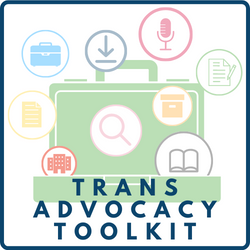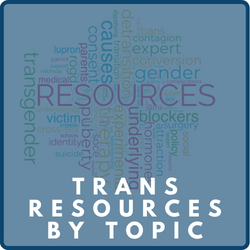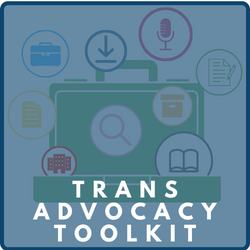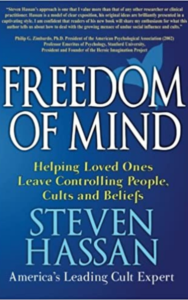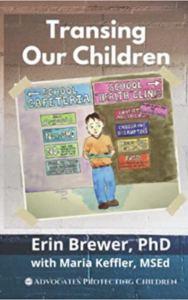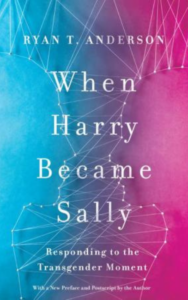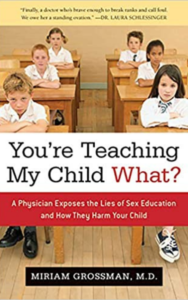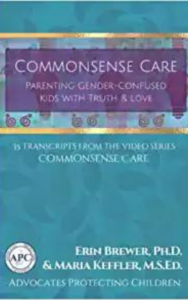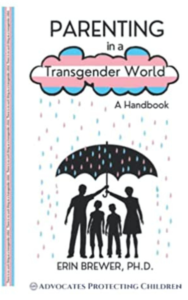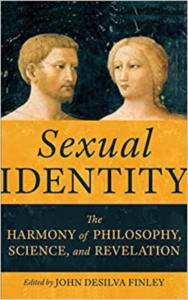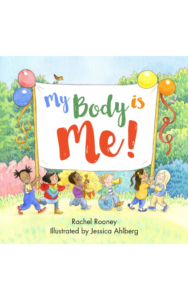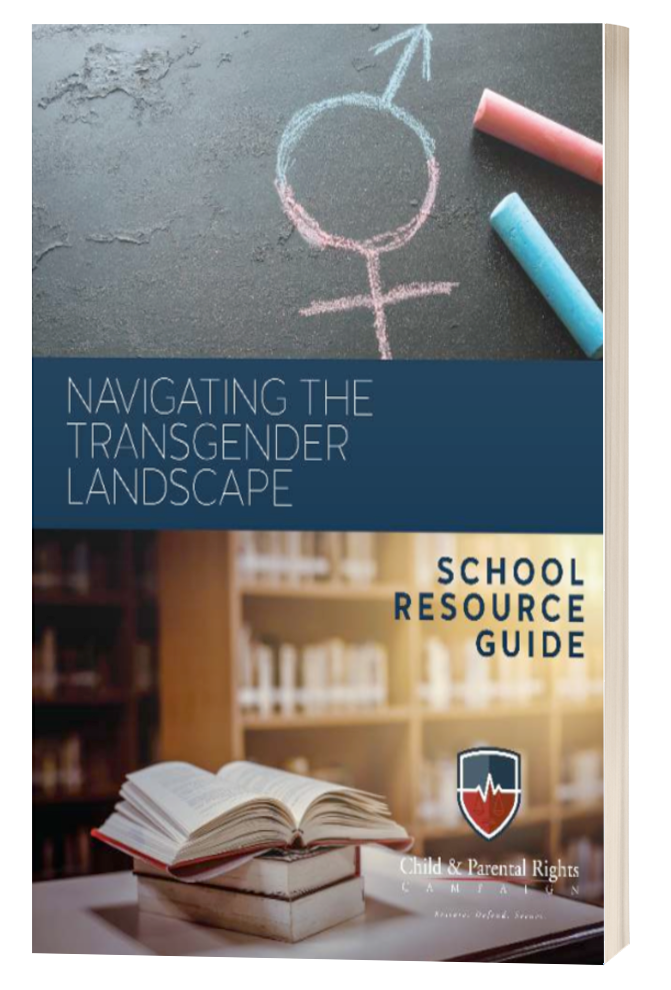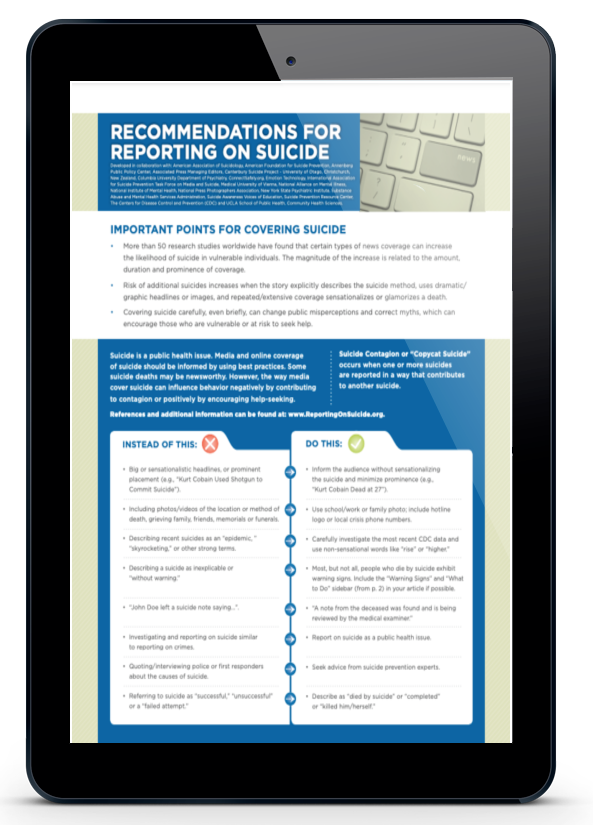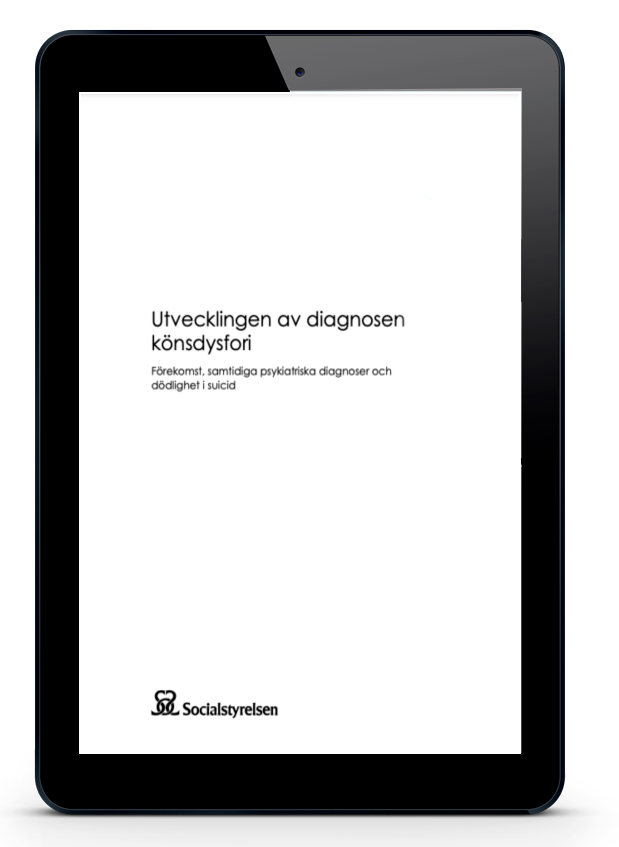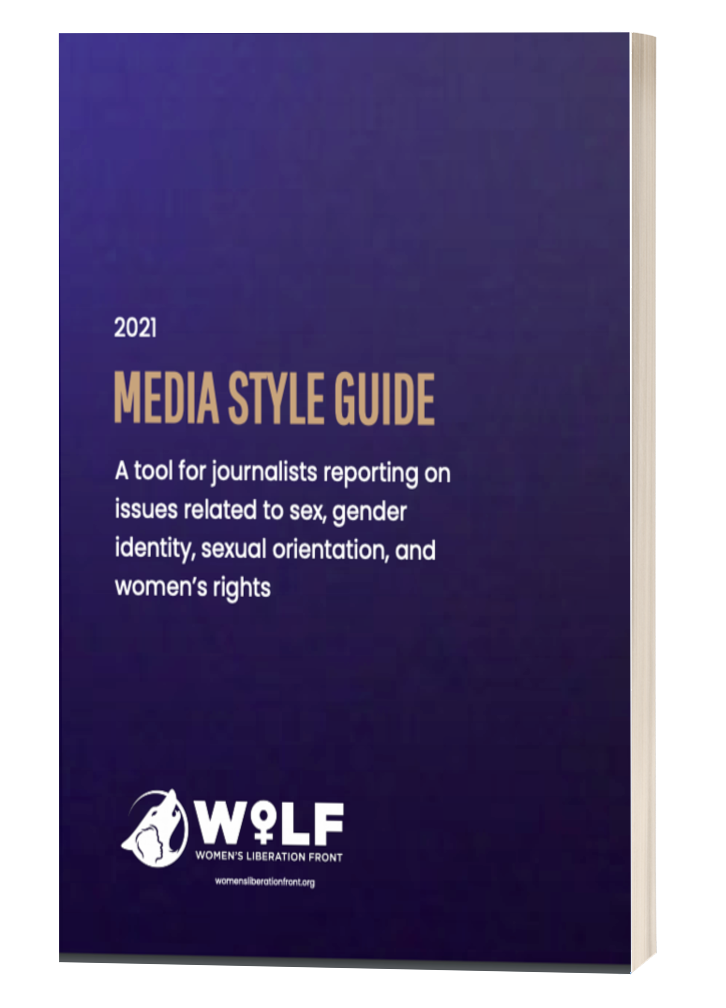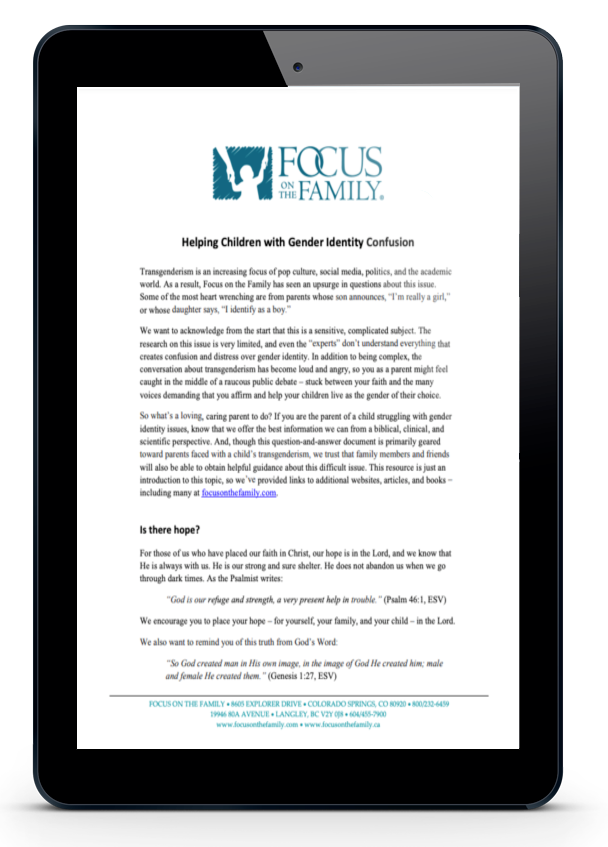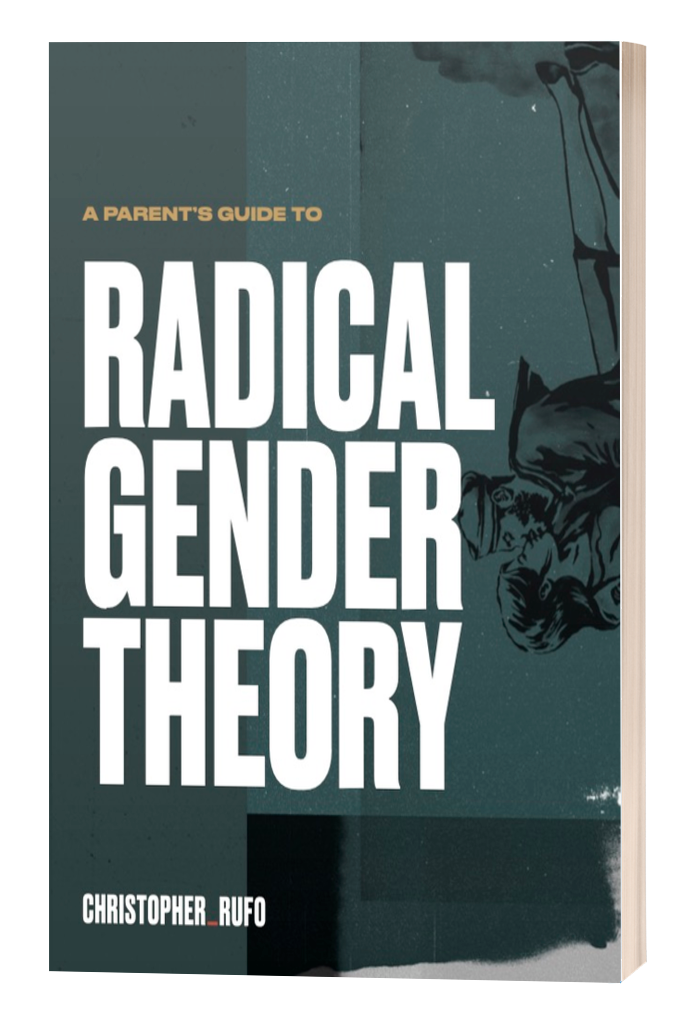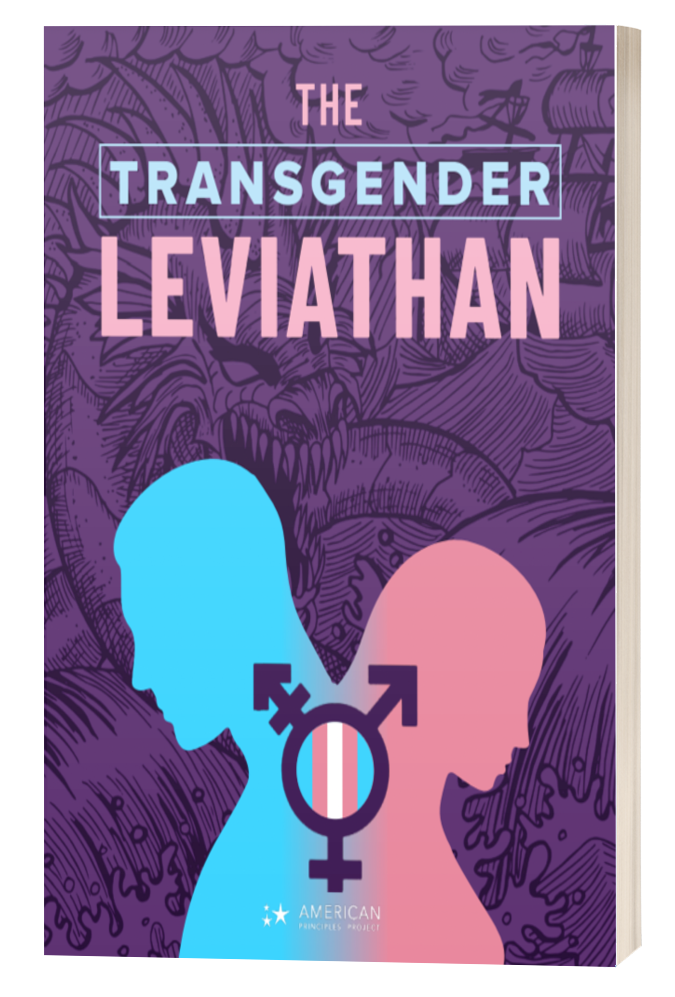UNDERSTANDING TRANSGENDER ISSUES
Resources by Topic
PUBERTY BLOCKERS | CROSS-SEX HORMONES | SURGERY | CONSENT | POTENTIAL CAUSES | ROGD | SUICIDE | SOCIAL TRANSITION | MEDICAL TRANSITION | SOCIAL CONTAGION | PARENTAL RIGHTS | POLICIES | EXPERIMENTATION | LEGISLATION | SOGI | WOMEN’S SPORTS | PUBLIC ACCOMMODATIONS | BIRTH CERTIFICATES | INTERSEX/DSD | COMPELLED SPEECH | AFFIRMATION | GENDER DYSPHORIA | DESISTERS/DETRANSITIONERS | THERAPY BANS
Browse more videos by topic.
Experts
Expert Interview: Dr. Patrick Lappert
Expert Interview: Dr. Michelle Cretella
Expert Interview: Dr. Quentin Van Meter
Victims
Transgender Victim: Erin’s Story
Transgender Victim: Billy’s Story
Transgender Victim: Sydney’s Story
Transgender Victim: Walt’s Story
Transgender Victim: Susan’s Story
Topics
Understanding Transgender Issues
Children. Can’t. Consent. Period.
Medical Experimentation on Children
Arresting Child Development: Puberty Blockers on Trial
Transgender Suicide: The Tragedy and the Truth
Transgender Surgery: “What Have I Done?”
Cross-Sex Hormones: The Horrors and the Harms
Trans-Identity Development: Potential Causes
The Transgender War on Parental Rights
The Transgender Agenda: Keep Out of Reach of Children
Advocacy Toolkit
Books
Videos
Gender Dysphoria in Children: A Cry for Help Not Hormones
Why Mastectomies for Healthy Teen Girls is No Big Deal
The Boyce of Reason
Commonsense Care
Dysphoric
Medical Harms from the Treatment of Child and Adolescent Gender Dysphoria
HB1057 Senate Committee Hearing – Vulnerable Child Protection Act
I Regret Top Surgery
My experience with PLANNED PARENTHOOD
NHS child gender clinic: Staff welfare concerns ‘shut down’ – BBC Newsnight
Puberty blockers: Under-16s ‘unlikely’ to be able to give informed consent
Puberty blockers: ‘We need facts and evidence, not ideology’
The Rise of Transgender Medicine
Detransition Conference and medical ethics in the age of gender identity
ROGD Webinar
Trans Mission
Trans Train
Utah House Judiciary Committee Hearing Highlights on HB 399
Erin Brewer, ATI 2021, Her Story
Heyer – ATI 2021
Gender
Former Transgender Asks Senators Not to Ban Counselling That Helped Her Change:
Michelle Cretella
Organizations
Guides
Research
Fertility preservation: is there a model for gender-dysphoric youth?
This review explores the current knowledge and ethical concerns surrounding FP in youths undergoing cancer or GD treatments, highlighting the limited evidence on long-term reproductive outcomes, especially for those with GD.
Do trans- kids stay trans- when they grow up? (Blog post by Dr. James Cantor)
In total, there have been three large scale follow-up studies and a handful of smaller ones. I have listed all of them below, together with their results. (In the table, “cis-” means non-transsexual.) Despite the differences in country, culture, decade, and follow-up length and method, all the studies have come to a remarkably similar conclusion: Only very few trans- kids still want to transition by the time they are adults. Instead, they generally turn out to be regular gay or lesbian folks. The exact number varies by study, but roughly 60–90% of trans- kids turn out no longer to be trans by adulthood.
Transgender and Gender Diverse Children and Adolescents: Fact-Checking of AAP Policy
The American Academy of Pediatrics (AAP) recently published a policy statement: Ensuring comprehensive care and support for transgender and gender-diverse children and adolescents. Although almost all clinics and professional associations in the world use what’s called the watchful waiting approach to helping gender diverse (GD) children, the AAP statement instead rejected that consensus, endorsing gender affirmation as the only acceptable approach. Remarkably, not only did the AAP statement fail to include any of the actual outcomes literature on such cases, but it also misrepresented the contents of its citations, which repeatedly said the very opposite of what AAP attributed to them.
The effect of GnRHa treatment on bone density in young adolescents with gender dysphoria
Background More young people with gender dysphoria (GD) are undergoing hormonal intervention starting with gonadotropin-releasing hormone analogue (GnRHa) treatment. The impact on bone density is not known, with guidelines mentioning that bone mineral density (BMD) should be monitored without suggesting when. This study aimed to examine a cohort of adolescents from a single centre to investigate whether there were any clinically significant changes in BMD and bone mineral apparent density (BMAD) whilst on GnRHa therapy.
Occurrence of Acute Cardiovascular Events in Transgender Individuals Receiving Hormone Therapy
In hypogonadal/postmenopausal individuals, hormone therapy has been associated with an increased risk for cardiovascular events (CVEs). A steeply growing population that often receives exogenous hormones is transgender individuals. Although transgender individuals hypothetically have an increased risk of CVEs, there is little known about the occurrence of CVEs in this population.
Pelvic pain and persistent menses in transgender men
Pelvic pain in transgender men can be a clinical challenge and has a broad differential diagnosis. Pelvic pain less than 6 months of duration is considered acute.
Use of puberty blockers for gender dysphoria: a momentous step in the dark
We write with three areas of concern about the increasing use of puberty-blocking medication for gender dysphoria (GD) referred to in your recent leading article.
Cross-sex Hormones and Acute Cardiovascular Events in Transgender Persons: A Cohort Study
Venous thromboembolism (VTE), ischemic stroke, and myocardial infarction in transgender persons may be related to hormone use.
Evidence for an altered sex ratio in clinic-referred adolescents with gender dysphoria
Sociological and sociocultural explanations are offered to account for this recent inversion in the sex ratio of adolescents with gender dysphoria.
Self-Harm and Suicidality in Children Referred for Gender Dysphoria
This study examined rates of self-harm and suicidality (ideation and behavior) in children referred clinically for gender dysphoria compared with their siblings, and referred and nonreferred children from the Child Behavior Checklist (CBCL) standardization sample.
For adolescents with gender dysphoria, it has become common to be offered hormonal treatment to either delay or suppress pubertal development and/or to masculinize or feminize the body. At the same time, it has been our clinical impression that the psychological vulnerability of at least some of these youth has been overlooked.
Studies of children with gender dysphoria (GD) have reported an overrepresentation of autism spectrum disorder (ASD) or traits. One limitation of these studies has been the absence of a concurrent comparison group of children referred for other clinical problems. The present study addressed this gap by comparing 61 children referred for GD with 40 children referred for other clinical concerns (age range, 4–12 years).
In on-line forums, parents have reported that their children seemed to experience a sudden or rapid onset of gender dysphoria, appearing for the first time during puberty or even after its completion. Parents describe that the onset of gender dysphoria seemed to occur in the context of belonging to a peer group where one, multiple, or even all of the friends have become gender dysphoric and transgender-identified during the same timeframe. Parents also report that their children exhibited an increase in social media/internet use prior to disclosure of a transgender identity.
The study’s purpose was to describe a population of individuals who experienced gender dysphoria, chose to undergo medical and/or surgical transition and then detransitioned by discontinuing medications, having surgery to reverse the efects of transition, or both.
What factors, aside from the lack of a rigorous evidence base, might contribute to dangerous medical practices? Can history inform us anything about what might lead physicians to over-enthusiastically and prematurely embrace risky and unproven treatments? History suggests there is most likely a complex interplay of multiple factors, and I discuss some of these in this section. In the subsequent section, I return to discuss the gender affirmative treatment approach for GD youth and highlight some themes that may suggest some parallels with this history.
The Tavistock’s Experiment with Puberty Blockers
The Dutch protocol promised to create a more passable simulacrum of the opposite sex than could be achieved by physical intervention in adulthood. It was therefore embraced by trans-identified children and their parents, by older transgender activists, and by some clinicians specializing in gender dysphoria. The Gender Identity Development Service (GIDS), part of the Tavistock and Portman NHS Foundation Trust, treats children with gender dysphoria from England, Wales, and Northern Ireland. It launched an experimental study of “puberty blockers”—the more friendly term for GnRHa when administered to children with gender dysphoria—in 2011. The experiment gave triptorelin to 44 children, which in all or almost all cases led eventually to cross-sex hormones. This paper describes the origins and conduct of this study and scrutinizes the evidence on its outcomes.
Puberty Blockers and Suicidality in Adolescents Suffering from Gender Dysphoria
Turban et al. (2020) contributed nothing to our knowledge of the effects of suppressing puberty in adolescents.
Given that puberty suppression left up to a third of patients with abnormally low bone density, Joseph et al.’s recommendations are surprisingly complacent. One is to reduce DXA monitoring which ‘can have significant financial implications for healthcare providers’. Another is to change the computation of Z-scores; ‘reference ranges may need to be re-defined for this select patient cohort’. Rather than altering a measure that provides inconvenient findings, practitioners of puberty suppression must record fractures as adverse events.
Puberty Blockers and Suicidality in Adolescents Suffering from Gender Dysphoria
According to Turban, King, Carswell, and Keuroghlian (2020), suicidal ideation is lower in transgender adults who as adolescents had been prescribed “puberty blockers”—gonadotropin-releasing hormone analogs (GnRHa). This finding was derived from a large nonrepresentative survey of transgender adults in the U.S., which included 89 respondents who reported taking puberty blockers. Turban et al. (2020) tested six measures of suicidality and three other measures of mental health and substance abuse. With multivariate analysis, only one of these nine measures yielded a statistically significant association: the respondents who reported taking puberty blockers were less likely to have thought about killing themselves than were the respondents who reported wanting blockers but not obtaining them. This finding was widely reported in the media; the lead author published a column on its implications for health policy in the New York Times (Turban, 2020).
Correction to Bränström and Pachankis
After the article “Reduction in Mental Health Treatment Utilization Among Transgender Individuals After Gender-Affirming Surgeries: A Total Population Study” by Richard Bränström, Ph.D., and John E. Pachankis, Ph.D. (doi: 10.1176/appi.ajp.2019.19010080), was published online on October 4, 2019, some letters containing questions on the statistical methodology employed in the study led the Journal to seek statistical consultations. The results of these consultations were presented to the study authors, who concurred with many of the points raised. Upon request, the authors reanalyzed the data to compare outcomes between individuals diagnosed with gender incongruence who had received gender-affirming surgical treatments and those diagnosed with gender incongruence who had not. While this comparison was performed retrospectively and was not part of the original research question given that several other factors may differ between the groups, the results demonstrated no advantage of surgery in relation to subsequent mood or anxiety disorder-related health care visits or prescriptions or hospitalizations following suicide attempts in that comparison.
Informed Consent for Transgendered Patients
This article reviews the history of informed consent, presents the conflicts of ethical principles, and presents three categories of risk that must be appreciated before informed consent is accomplished. The risks involve biological, social, and psychological consequences. Four specific risks exist in each category. The World Professional Association for Transgender Health’s Standards of Care recommend an informed consent process, which is at odds with its recommendation of providing hormones on demand.
Ethical Concerns About Emerging Treatment Paradigms for Gender Dysphoria
The increasing incidence of requests for medical services to support gender transition for children, adolescents, and adults has consequences for society, governmental institutions, schools, families, health-care professionals, and, of course, patients. The sociological momentum to recognize and accommodate to trans phenomena has posed ethical dilemmas for endocrinologists, mental health professionals, and sexual specialists as they experience within themselves the clash between respect for patient autonomy, beneficence, nonmaleficence, and informed consent. The larger ethical clashes are cultural and therefore political. There is a distinct difference between pronouncements that represent human rights ideals and the reality of clinical observations.
A Follow-Up Study of Boys With Gender Identity Disorder
This study reports follow-up data on the largest sample to date of boys clinic-referred for gender dysphoria (n = 139) with regard to gender identity and sexual orientation.
The Right to Best Care for Children Does Not Include the Right to Medical Transition
Refuting that any child has the right to medically transition
Do children with gender dysphoria have intense/obsessional interests?
This study examined whether children clinically referred for gender dysphoria (GD) show increased symptoms of autism spectrum disorder (ASD).
Epidemiology of gender dysphoria and transgender identity
This review provides an update on the epidemiology of gender dysphoria and transgender identity in children, adolescents and adults.
Temple Newhook et al. (2018) provide a critique of recent follow-up studies of children referred to specialized gender identity clinics, organized around rates of persistence and desistance. The critical gaze of Temple Newhook et al. examined three primary issues: (1) the terms persistence and desistance in their own right; (2) methodology of the follow-up studies and interpretation of the data; and (3) ethical matters. In this response, I interrogate the critique of Temple Newhook et al. (2018).
Adolescents with Gender Dysphoria: Reflections on Some Contemporary Clinical and Research Issues
This article provides an overview of five contemporary clinical and research issues pertaining to adolescents with a diagnosis of gender dysphoria: (1) increased referrals to specialized gender identity clinics; (2) alteration in the sex ratio; (3) suicidality; (4) “rapid-onset gender dysphoria” (ROGD) as a new developmental pathway; (5) and best practice clinical care for adolescents who may have ROGD.
Debate: Different strokes for different folks
A gender social transition in prepubertal children is a form of psychosocial treatment that aims to reduce gender dysphoria, but with the likely consequence of subsequent (lifelong) biomedical treatments as well (gender-affirming hormonal treatment and surgery).
Prevalence studies conclude that fewer than 1 in 10,000 adult natal males and 1 in 30,000 adult natal females experience GD, but such estimates vary widely. GD in adults is associated with an elevated prevalence of comorbid psychopathology, especially mood disorders, anxiety disorders, and suicidality.
Objective This study assessed whether children clinically referred for gender dysphoria (GD) show symptoms that overlap with Autism Spectrum Disorder (ASD). Circumscribed preoccupations/intense interests and repetitive behaviors were considered as overlapping symptoms expressed in both GD and ASD.
The DSM-5 and the Politics of Diagnosing Transpeople
In the DSM-5, there has been a change in the diagnosis for transpeople of all ages from Gender Identity Disorder (GID) to Gender Dysphoria (GD), in part to better indicate the distress that transpeople may experience when their gender identity feels incongruent.
Legal & Ethical Considerations For Informed Consent In Clinical Trials
The purpose of this article is to provide some thoughts as to the role each of us can play in clarifying some issues related to informed consent. These perspectives are based on my experiences as a registered nurse in a career that spanned more than three decades in private hospital settings, a private surgical association, and a university health system.
The treatment for transsexualism is sex reassignment, including hormonal treatment and surgery aimed at making the person’s body as congruent with the opposite sex as possible. There is a dearth of long term, follow-up studies after sex reassignment.
Detransition-Related Needs and Support: A Cross-Sectional Online Survey
The aim of this study is to analyze the specific needs of detransitioners from online detrans communities and discover to what extent they are being met.
This study evaluated the characteristics of suicide news articles in the digital press, their adherence to World Health Organization (WHO) recommendations, and the effectiveness of interventions.
Cardiovascular Disease Risk Factors and Myocardial Infarction in the Transgender Population
Despite their growing number and increasing specific medical needs, there has been a lack of research on cardiovascular disease (CVD) and CVD risk factors in this population.
Psychiatry’s ethical involvement in gender-affirming care
To reflect on the role of psychiatry in authorising physical treatments for Gender Dysphoria and to examine the quality of evidence for gender-reassignment.
One Size Does Not Fit All: In Support of Psychotherapy for Gender Dysphoria
We agree with Turban et al.’s (2020) position that therapies using coercive tactics to force a change in gender identity have no place in health care. We do, however, take issue with their problematic analysis and their flawed conclusions, which they use to justify the misguided notion that anything other than “affirmative” psychotherapy for gender dysphoria (GD) is harmful and should be banned.
Peer Contagion in Child and Adolescent Social and Emotional Development
In this article, we examine the construct of peer contagion in childhood and adolescence and review studies of child and adolescent development that have identified peer contagion influences. Evidence suggests that children’s interactions with peers are tied to increases in aggression in early and middle childhood and amplification of problem behaviors such as drug use, delinquency, and violence in early to late adolescence.
A Typology of Gender Detransition and Its Implications for Healthcare Providers
Gender detransition is an emerging yet poorly understood phenomenon in our society. In the absence of research, clinicians and researchers have applied the concept of detransition differently, leading to inconsistencies in its use. The article suggests a typology of gender detransition based on the cessation or the continuation of a transgender identity to address this issue.
This prospective study examines the clinical characteristics of children (n = 79; 8.42–15.92 years old; 33 biological males and 46 biological females) presenting to a newly established, multidisciplinary Gender Service in New South Wales, Australia, and the challenges faced by the clinicians providing clinical services to these patients and their families.
Transgender youth may initiate GnRH agonists (GnRHa) to suppress puberty, a critical period for bone-mass accrual. Low bone mineral density (BMD) has been reported in late-pubertal transgender girls before gender-affirming therapy, but little is known about BMD in early-pubertal transgender youth.
Outbreak: On Transgender Teens and Psychic Epidemics
Currently, we appear to be experiencing a significant psychic epidemic that is manifesting as children and young people coming to believe that they are the opposite sex, and in some cases taking drastic measures to change their bodies.
How common is intersex? a response to Anne Fausto-Sterling
If the term intersex is to retain any meaning, the term should be restricted to those conditions in which chromosomal sex is inconsistent with phenotypic sex, or in which the phenotype is not classifiable as either male or female. Applying this more precise definition, the true prevalence of intersex is seen to be about 0.018%, almost 100 times lower than Fausto-Sterling s estimate of 1.7%.
Puberty Blockers, Cross-Sex Hormones, and Youth Suicide
Lowering legal barriers to make it easier for minors to undergo cross-sex medical interventions without parental consent does not reduce suicide rates—in fact, it likely leads to higher rates of suicide among young people in states that adopt these changes. States should instead adopt parental bills of rights that affirm the fact that parents have primary responsibility for their children’s education and health, and that require school officials and health professionals to receive permission from parents before administering health services, including medication and “gender-affirming” counseling, to children under 18. States should also tighten the criteria for receiving cross-sex treatments, including raising the minimum eligibility age.
This study attempts, for the first time, to isolate and examine the question of current psychosocial harm for former SOCE participants among sexual minorities in representative population data.
Mormon clients’ experiences of conversion therapy: the need for a new treatment approach
Perspectives were gathered of 50 Mormon individuals who had undergone counseling to change their sexual orientation. The data were analyzed using the constant comparative method and participant verification, thereby developing a grounded theory. A model emerged that depicted participants’ intrapersonal and interpersonal motivations for seeking conversion or “reparative” therapy, their perceived benefits and harms of such interventions, and the factors that facilitated self-acceptance and consolidation of a positive self-identity. Based on these descriptions, this study provides the foundation for a broader-based treatment approach (besides one focused solely on changing sexual orientation or adopting a lesbian, gay, or bisexual identity), which is designed to produce individualized congruent solutions for religiously conflicted, same-sex-attracted clients.
A longitudinal study of attempted religiously mediated sexual orientation change.
Evidence from the study suggested that change of homosexual orientation appears possible for some and that psychological distress did not increase on average as a result of the involvement in the change process. The authors explore methodological limitations circumscribing generalizability of the findings and alternative explanations of the findings, such as sexual identity change or adjustment.
Sexual Orientation Change Efforts (SOCE) *Reduce* Suicide: Correcting A False Research Narrative
Experiencing SOCE therapy does not encourage higher suicidality, as they claim; rather, experiencing higher suicidality appears to encourage recourse to SOCE, which in turn strongly reduces suicidality, particularly initial suicide attempts.
Polyamory, monoamory, and sexual fluidity: A longitudinal study of identity and sexual trajectories.
Prior research has documented shifts in sexual orientation identity, attractions, and partnering behavior over time and social context, commonly referred to as sexual fluidity (Diamond, 2008). Social contextual factors may include relationship status and type of relationship, and these may be particularly salient in polyamorous communities where multiple relationships and some degree of fluidity are common.
Sexual Orientation Change Efforts, Adverse Childhood Experiences, and Suicidality
Our interest is not to defend genuinely unethical practices but, rather, to promote scientific integrity in a domain of research that is subject to immense professional and political pressure to support specific legislative and policy aims.5 In our view, the Blosnich et al. study, as with most research in this literature, offers conclusions in support of expansive and imprecisely defined SOCE bans that run ahead of what methodological limitations allow.
Sexual Minorities who Reject an LGB Identity: Who Are They and Why Does It Matter?
Results suggested those who reject an LGB identity are more likely to be religiously active, full members of their church, and highly intrinsic and theologically conservative in their religious viewpoint. They further reported having slightly more lifetime heterosexual attractions, fantasies, and behaviors; greater internalized homonegativity; and being more interested in having children and a child-centered family life. They were also more likely to be single and celibate or in a heterosexual relationship. Contrary to expectations, these differences were not associated with health differences in depression, anxiety, and social flourishing.
The critical gaze of Temple Newhook et al. examined three primary issues: (1) the terms persistence and desistance in their own right; (2) methodology of the follow-up studies and interpretation of the data; and (3) ethical matters. In this response, I interrogate the critique of Temple Newhook et al. (2018).
Increasing numbers of adolescents present in adolescent gender identity services, desiring sex reassignment (SR). The aim of this study is to describe the adolescent applicants for legal and medical sex reassignment during the first two years of adolescent gender identity team in Finland, in terms of sociodemographic, psychiatric and gender identity related factors and adolescent development.
Our results suggest the need to bring into play a biopsychosocial, trauma-informed model of mental health care for children presenting with gender dysphoria. Ongoing therapeutic work needs to address unresolved trauma and loss, the maintenance of subjective well-being, and the development of the self.
Transgender medicalization and the attempt to evade psychological distress
The author argues that the quality of evidence supporting the biomedical approach is extremely poor. This puts young trans people at risk of receiving potentially damaging medical treatment they may later seek to reverse or come to regret, while their underlying psychological issues remain unaddressed.
Reflections on the Clinician’s Role with Individuals Who Self-identify as Transgender
Gender identity is only one aspect of an individual’s multifaceted identity. The contributions to the passionate positions in the trans culture debate are discussed along with the controversy over the official.
Impact of trauma on sexual functioning and sexual relationships
This paper considers the impact of traumatic experiences on sexual functioning and sexual relationships. There is a large literature on the way sexual trauma affects later sexual functioning and relationships. Non-sexual traumatic experiences also affect these domains.
Efficacy and risk of sexual orientation change efforts: a retrospective analysis of 125 exposed men
SOCE was perceived as an effective and safe therapeutic practice by this sample of participants. We close by offering a unifying understanding of discrepant findings within this literature and caution against broad generalizations of our results.
Effects of Therapy on Religious Men Who Have Unwanted Same-Sex Attraction
In our study, most of those who participated in group or professional help had heterosexual shifts in sexual attraction, sexual identity and behavior with large statistical effect sizes, similarly moderate-to-marked decreases in suicidality, depression, substance abuse, and increases in social functioning and self-esteem. Almost all harmful effects were none to slight.
Sexual Fluidity in Male and Females
These studies also provide evidence for gender differences in sexual fluidity, but the extent and cause of these gender differences remain unclear and are an important topic for future research.
In what follows, I will briefly describe the history of SB 1172 and analyze some of the likely factors that led to the pursuit of a statutory solution to a professional practice concern. I will also outline several recommendations for improving how controversial issues are addressed, not only by the profession of psychology, but also by politicians and judges. By examining these concerns through the lens of SB 1172, I hope to highlight the perils of resolving matters of professional practice through legislative action.
Homosexuality and Co-Morbidities: Research and Therapeutic Implications
People reporting SSA have a more widespread and intense psychopathological burden than probably any other group of comparable size in society, though college-age people may have more substance abuse problems. The reversed gender pattern of these conditions suggests some link with SSA itself. Surveys in recent literature suggest that perceived discrimination rather than objective discrimination is to blame for suicidality. Recent literature also finds that particular emotion/avoidant-based coping mechanisms used by people reporting SSA almost entirely account for the effects of this perceived discrimination.
Professional care for unwanted same-sex attraction: What does the research say?
In recent years, national and international medical and mental-health associations typically have emphasized the potential harmfulness of professional care for unwanted same-sex attraction (SSA or homosexuality) and behavior. State legislatures in the US and legislative bodies in other countries either have passed or are considering passing laws which would penalize professionals who provide professional care for unwanted SSA—to minors and/or adults—including the loss of the license to practice. This paper was written as a response to the present situation in the UK.
This article analyzes the impact of religion on reported levels of subjective well‐being (general happiness) among lesbian, gay, bisexual, and transgender (LGBT) adults. Although previous studies find religious affiliation to be a significant predictor of subjective well‐being among the general population in the United States, limited quantitative research investigates general happiness among sexual and gender minorities. This study augments the existing literature by using a national survey of LGBT adults conducted by the Pew Research Center in 2013. The results show that religious affiliation is a significant predictor of LGBT individuals’ happiness. LGBT individuals who identify as Catholic, agnostic or atheist, or with no particular religious affiliation report lower levels of happiness compared to mainline Protestants. Surprisingly, no significant differences are found between mainline Protestants (whose church doctrine often accepts same‐sex relations) and evangelical Protestants (whose church doctrine often condemns same‐sex relations). In addition, income is the only control variable that affects general happiness. Our analysis reveals interesting differences in the determinants of subjective well‐being between the LGBT and general population. (PsycINFO Database Record (c) 2017 APA, all rights reserved)
Some classes represent generally consistent indicators across dimensions over time, while other classes describe more emerging or discontinuous trajectories. Substantial changes were common not only from late adolescence to the early 20s but also from the early 20s to the late 20s, indicating that sexual orientation development continues throughout emerging adulthood.
Is Conservative Religiousness Inherently Associated with Poorer Health for Sexual Minorities?
Results of path analysis involving sexual minority participants (N = 1317) from diverse sociopolitical contexts revealed health outcomes to be associated with internalized homonegativity and the resolution of conflict between religious and sexual minority identities. Contrary to expectations, several markers of religiousness were not directly associated with either improved or worsened health outcomes for depression or anxiety. However, religious activity moderated the influence of internalized homonegativity (IH) on depression such that IH was less strongly related to depression among individuals who frequently attended religious services than among individuals who infrequently attended religious services. These findings have special salience for advancing a more accurate understanding of conservatively religious sexual minorities and directing culturally sensitive research, clinical services, and public policy.
In this brief comment on Hyde, Bigler, Joel, Tate, and van Anders (2019), we maintain that sex and gender are distinct variables that impact human health in critical ways both individually and interactively.
The literature germane to the care of clients presenting for psychotherapy with conflicts between their sexual orientation and religious values typically addresses the topic from within a particular therapeutic approach. This article addresses the issue from a broader perspective that takes into account 3 different paradigms: gay-affirmative therapy, sexual identity therapy, and change-oriented therapy. The authors describe the 3 approaches, compare and contrast them across several different key dimensions of theory and practice, and identify some strengths and potential limitations of each approach for assisting clients who are attempting to navigate the resolution of their conflict.
I conclude with some recommendations through which the field of marriage and family therapy can reduce the potential for conflicts and thereby reassure these clinicians that they continue to be welcomed even if their vision of marriage differs from that which is formally endorsed by their professional associations.
Satisfaction and Health Within Four Sexual Identity Relationship Options
The SSR group had the least depression and anxiety and the most life satisfaction and physical health, followed by the MOR group, followed by the two single groups. Results from a stepwise regression predicting satisfaction from important aspects of life and relationships identified that meeting needs for connection, intimacy, and mutual understanding was the strongest predictor of satisfaction across all options. Other significant variables included participant-defined authentic sexual expression, resolving conflicts with religion, and reducing depression and anxiety. Results may inform SSA/LGB individuals who are questioning which option fits best for them and help guide therapists who work with these individuals.
Traditional religious belief, identity, and activity were associated with rating some goals of SOCE as at least mildly helpful. Effect sizes were mostly moderate to large for these statistics. There was a heightened level of depression and anxiety among these sexual minorities overall, but past pursuit of change-oriented goals did not appear to be a major explanation for current levels of distress. We conclude by outlining some implications and cautions based on our findings for both proponents and opponents of change-oriented psychotherapy approaches.
Sexual Minorities who Reject an LGB Identity: Who Are They and Why Does It Matter?
Although many sexual minorities adopt a lesbian, gay, bisexual (LGB) identity, some persons who experience same-sex attractions reject an LGB identity in favor of other descriptions for their sexuality, such as “same-sex attracted” or “mostly heterosex- ual” (Lefevor et al., 2020). Because research typically focuses on LGB-identified individ- uals, very little is known about those who reject an LGB identity. In this study, we seek to identify characteristics of this group and how these characteristics may distinguish them from sexual minorities who are LGB-identified. We also examine to what extent these groups differ on several health measures and close with a discussion about why our findings matter for this literature.
Sexual Attraction Fluidity and Well-Being in Men: A Therapeutic Outcome Study
Recent legislative efforts initiated by politicians and activists have limited or threatened to limit the autonomy and self-determination of individuals desiring sexual attraction fluidity exploration in therapy (SAFE-T), claiming that SAFE-T is ineffective and harmful. The American Psychological Association has claimed that there is not enough rigorous research to draw conclusions about the efficacy or beneficence and nonmaleficence of SAFE-T. The present longitudinal study examined the sexual attraction fluidity (SAF) and wellbeing of psychotherapy clients while participating in SAFE-T. Participants were 75 adult male psychotherapy clients reporting both same-sex attraction experiences (SSAE) and the desire to participate in SAFE-T to achieve SAF. Well-being was measured with the OQ-45.2, SSAE, and opposite-sex attraction experiences (OSAE) with a Likert scale, and sexual attraction identity (SAI) with a Likert-type item. Results of t-tests of the means of baseline and final well-being measures revealed a clinically and statistically significant improvement in well-being. A linear mixed model was used to analyze the SSAE, OSAE, and SAI data obtained at baseline, 6 months, 12 months, 18 months, and 24 months, with results showing statistically significant fluidity of all three factors. SSAE decreased, OSAE increased, and SAI moved toward heterosexual identity.
The Dutch Protocol for Juvenile Transsexuals: Origins and Evidence
It has been a quarter of a century since Dutch clinicians proposed puberty suppression as an intervention for “juvenile transsexuals,” which became the international standard for treating gender dysphoria. This paper reviews the history of this intervention and scrutinizes the evidence adduced to support it.
Puberty Blockers, Cross-Sex Hormones, and Youth Suicide
Lowering legal barriers to make it easier for minors to undergo cross-sex medical interventions without parental consent does not reduce suicide rates—in fact, it likely leads to higher rates of suicide among young people in states that adopt these changes. States should instead adopt parental bills of rights that affirm the fact that parents have primary responsibility for their children’s education and health, and that require school officials and health professionals to receive permission from parents before administering health services, including medication and “gender-affirming” counseling, to children under 18. States should also tighten the criteria for receiving cross-sex treatments, including raising the minimum eligibility age.
Gender dysphoria in young people: The Interim Cass Review and its implications for nursing
The aim of this editorial was to explore the implications for nurses of the initial published findings of the English ‘Independent review of gender identity services for children and young people’. The Review, led by paediatrician Dr Hilary Cass, was commissioned by NHS England. Its aim is to make recommendations on clinical management and service provision to ensure that the best model(s) for safe and effective services for children and young people who experience gender incongruence or gender-related distress are commissioned. The Interim Report was published in February 2022 (Cass, 2022) and represents the work of the Review to date. This work was instigated against a backdrop of growing international concern about the recent and very rapid growth in the numbers of children and young people presenting with gender dysphoria and how best to support them. Of particular concern has been the current model for care and role of medical and surgical intervention. Whilst findings and recommendations will only relate to England, they are likely to inform international opinion and reverberate well beyond that country.
Two Dutch studies formed the foundation and the best available evidence for the practice of youth medical gender transition. We demonstrate that this work is methodologically flawed and should have never been used in medical settings as justification to scale this “innovative clinical practice.” Three methodological biases undermine the research: (1) subject selection assured that only the most successful cases were included in the results; (2) the finding that “resolution of gender dysphoria” was due to the reversal of the questionnaire employed; (3) concomitant psychotherapy made it impossible to separate the effects of this intervention from those of hormones and surgery. We discuss the significant risk of harm that the Dutch research exposed, as well as the lack of applicability of the Dutch protocol to the currently escalating incidence of adolescent-onset, non-binary, psychiatrically challenged youth, who are preponderantly natal females. “Spin” problems—the tendency to present weak or negative results as certain and positive—continue to plague reports that originate from clinics that are actively administering hormonal and surgical interventions to youth. It is time for gender medicine to pay attention to the published objective systematic reviews and to the outcome uncertainties and definable potential harms to these vulnerable youth.
There are no laboratory, imaging, or other objective tests to diagnose a “true transgender” child. Children with GD will outgrow this condition in 61% to 98% of cases by adulthood. There is currently no way to predict who will desist and who will remain dysphoric. The degree to which GAT has contributed to the rapidly increasing prevalence of GD in children is unknown. The recent phenomenon of teenage girls suddenly developing GD (rapid onset GD) without prior history through social contagion is particularly concerning .
Articles
Podcasts
Letter Templates
Letter to opt out of all CSE and SOGI.
Teacher Curriculum Request Letter
Letter to find out curriculum.
Letter to school board about promotion and affirmation of gender dysphoria.
Sample Letter to Superintendent
Letter to school superintendent regarding concerns about policies that promote affirmation of gender dysphoria.
Letter to school teacher regarding concerns about policies that promote affirmation of gender dysphoria.
Letter templates for those in the UK who are concerned about the gender ideology at their schools.
National Task Force for Therapy Equality
Letter to oppose therapy bans.
Letter from American College of Pediatricians
Letter to oppose therapy bans.
Template Therapy Ban Letter to Legislators
Letter to oppose therapy bans.
Serious Harmful Implications of Therapy Ban Bills
Letter to oppose therapy bans.
Powerpoints
Policy Briefs
Other Resources
Lupron Victims Hub
The following *incomplete* list of lawsuits against Lupron's manufacturer entail its prescription to ``treat`` prostate cancer, endometriosis, fibroids, and infertility - and are listed in no particular order.
ViewRuling in THE TAVISTOCK AND PORTMAN NHS FOUNDATION TRUST case UK
This is a claim for judicial review of the practice of the defendant, the Tavistock and Portman NHS Foundation Trust, through its Gender Identity Development Service (GIDS) and the first and second Interveners (the Trusts) of prescribing puberty-suppressing drugs to persons under the age of 18 who experience gender dysphoria.
ViewDEFAMATION (LIBEL PER SE); AND 2. INJUNCTIVE RELIEF JURY TRIAL DEMANDED
Legal documents regarding false claims of conversion therapy.
View



